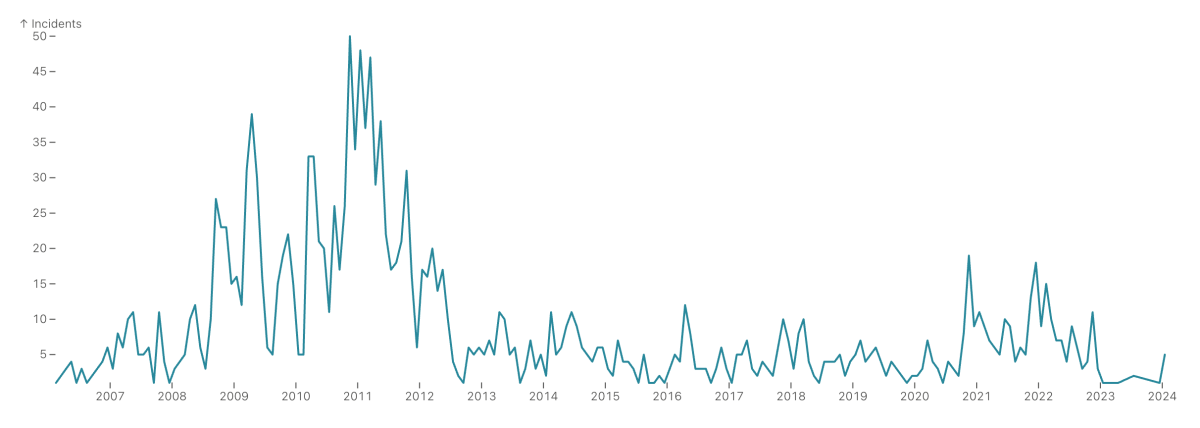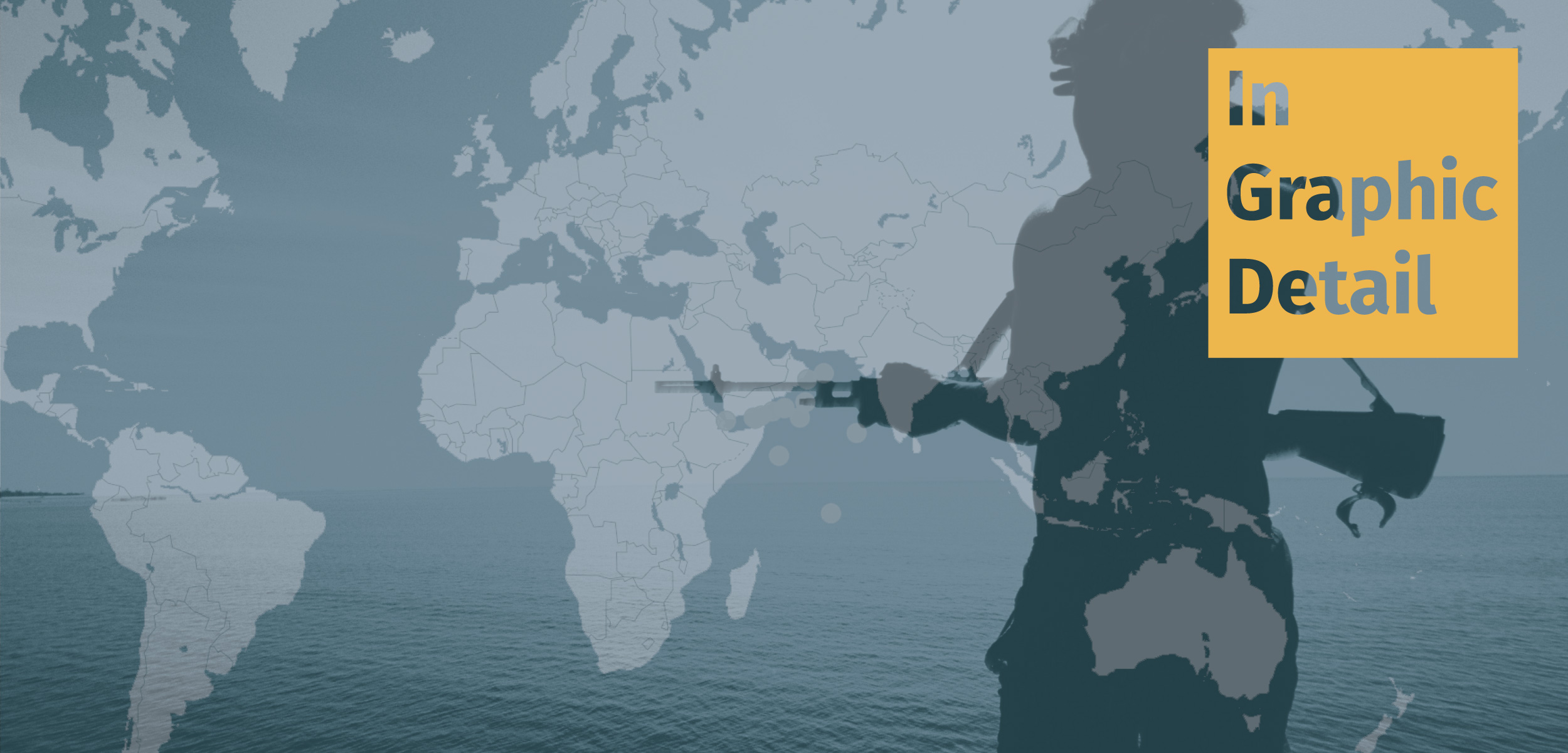In Graphic Detail: Pirates on the Horizon
A surge in piracy threatens to upend positive trends in maritime safety.
Article body copy
At around 11:30 a.m. on March 6, 2024, Houthi militants from Yemen fired a ballistic missile at a Barbados-flagged, Liberian-owned bulk carrier transiting the Gulf of Aden, a shipping route between the Arabian and Somali Peninsulas. A large fire broke out on the ship, and three people were killed. At least four others were injured.
Since October 2023, Houthis have launched over 60 maritime attacks, claiming the strikes are an act of retaliation against Israel’s military actions in the Gaza Strip. The March 6 strike was the first to result in civilian deaths.
This new slew of attacks on ships in the Gulf of Aden is considered by some to be piracy, which is upending a period of improving maritime safety. According to a new analysis conducted by researchers at Shanghai Maritime University in China, incidences of piracy fell from over 500 attacks in 2011 to just over 100 in 2022.
The study identifies three major hotspots for piracy: the Gulf of Aden, the Strait of Malacca—between Malaysia and Indonesia—and the Gulf of Guinea, located off West Africa.
While the Houthi attacks are largely in response to military offensives and war in the Middle East, other political, economic, and social factors play a role in piracy, notably political instability and financial desperation.
Globally, the rate of pirate attacks began climbing in 2006, partly due to civil conflict and famine in Somalia, which borders the Gulf of Aden. The resulting societal strife led some locals with diminished economic prospects into criminal activity. Additionally, the 2008 global financial crisis further destabilized Somalia and other coastal countries with precarious economies. Piracy peaked around 2011 before multinational military efforts undertaken in the following year reduced the number of attacks in waterways around the Horn of Africa.
The study shows another economic impetus for a small spike in piracy seen in 2015: soaring palm oil prices made hijacking oil-carrying ships in the Strait of Malacca particularly lucrative. Then 2020 saw another small global peak, likely a result of economic challenges brought on by the COVID-19 pandemic.
Pirate attacks in international waters from February 2006 to January 2024. Visualization by Mathew Brown with data courtesy of the International Maritime Organization

Year by year, the incidences of piracy ebb and flow around the world, but researchers have found that political instability and financial desperation play key roles in the illegal activity. Graph by Mathew Brown with data courtesy of the International Maritime Organization
Aside from bolstering fragile economies or finding diplomatic solutions to seemingly intractable political problems, which takes years, the only other way to prevent piracy is through security—an approach a consortium of countries has initiated in response to the Houthi attacks. Ships typically travel from the Indian Ocean to the Mediterranean Sea via the Gulf of Aden and the Red Sea along the Yemeni coast. But, to avoid attacks, many vessel owners are now opting to sail around the African continent. In December 2023, the United States, the United Kingdom, the Netherlands, Canada, Norway, Australia, and other allies launched Operation Prosperity Guardian. This naval protection force aims to protect ships and prevent Houthi attacks. Since then, the US Central Command has carried out dozens of self-defense strikes in the Red Sea.
Unfortunately, the operation in the Red Sea has created another challenge: a security vacuum around the Somali coast that emboldens local pirates. The cycle continues.

